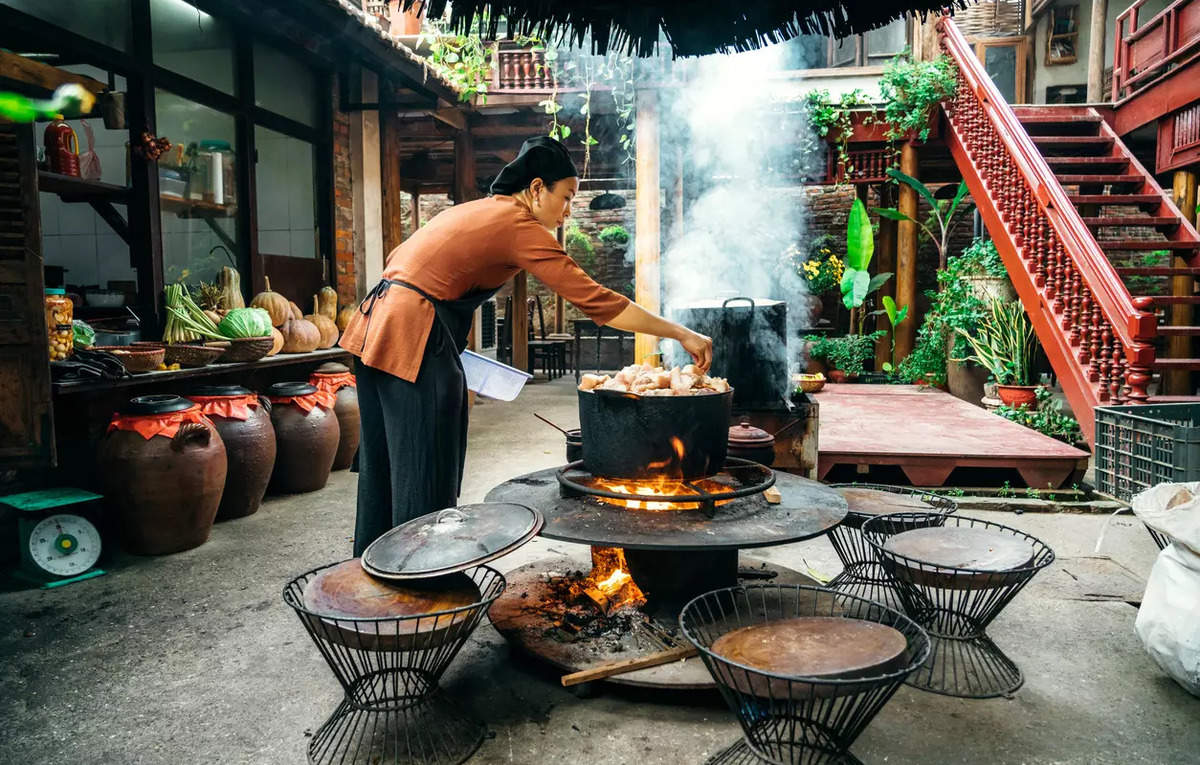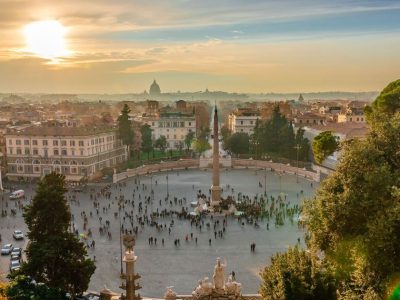
The week before Sam Aisbett opened Akuna in Ho Chi Minh City, Vietnam, in July 2023, he panicked. “I said, ‘What the hell am I doing? What an idiot,’” recalled the Australian chef in a recent video interview. There was no way his restaurant, with a menu price of 3.9 million dong (USD 160)—at least 20 times what stalls across the street were charging—could survive, he thought, even though he had a Michelin star under his belt.
But the risk paid off. Akuna flourished, and about a year later, the place bagged a star for Aisbett’s ingenious dishes created from Vietnamese ingredients. Shaved squid is served with local samphire, hearts of palm and squid dumplings, while uni is accompanied by fan shell clams and pickled durian.
Akuna’s opening is just one of the places on the burgeoning list of fine dining spots in Vietnam. The country is famous for its array of cheap and delectable noodles and skewers and sandwiches; now it’s gaining recognition among hungry travelers seeking luxury.
Last year the Michelin Guide arrived in Vietnam and awarded one star to four restaurants. Three more joined the list this year, including La Maison 1888 in Da Nang, a signal that Vietnam’s gourmet scene extends beyond its major cities. Of the seven starred restaurants, only one was French, despite the cuisine’s ties to fine dining and Vietnam’s colonial past. Three—Tam Vi, Anan Saigon and Gia—are categorized as Vietnamese. (Akuna is labeled “innovative.”)
Michelin’s entry into Vietnam comes as the country is expected to see a record 771 trillion dong (USD 31 billion) spending in travel and tourism spending this year, the World Travel & Tourism Council estimates. This represents about 7 per cent of its economy and supports 1 in 9 jobs in a country of roughly 100 million people. Domestic travelers are expected to spend a historic high 435 trillion dong this year, the organization added, as the country’s economy and middle-class population grow.
Luxury travel is expanding faster than other segments of the industry, said Margaux Constantin, a partner at McKinsey & Co. who focuses on tourism, in a video interview. This includes aspirational travelers, who may not be rich but are willing to splurge on occasion, increasing demand for premium dining. Vietnam’s proximity to other countries with a rising middle class such as India has helped as well—the number of visitors from India has tripled since 2019, reaching 312,000 between January and August of this year, partially offsetting a fall in Chinese visitors.
Food plays a crucial role in drawing globetrotters, with fine dining experiences being the second most popular activity among tourists, according to a McKinsey survey of 877 US and UK travelers earlier this summer, right behind sightseeing-and-art experiences. At least one luxury tour provider has turned its focus to gastronomy in Vietnam. Abercrombie & Kent selected Vietnam as the first destination for its food-focused tours, which began in May.
Increasing demand for culinary experiences on previous tours prompted the decision, said Suzanne Teng, global group product director, in an e-mail. The release of a Michelin Guide for Vietnam last year provided a “marketable hook,” she said, enabling visitors to combine street food experiences with meals at the one-starred Anan Saigon and Gia. Higher-than-expected demand has led the company to double the Vietnam food trips to 12 in 2025.
When Peter Franklin first opened Anan Saigon in 2017, friends thought he was “trying to sell ice to the Eskimos,” he says. A tasting menu meal there costs 2.3 million dong; its success showed there’s a market for contemporary Vietnamese food. “Travelers now can enjoy both a delicious USD 1 street-style banh mi and Anan Saigon luxurious-dining USD 100 banh mi,” jokes Franklin.
Gia co-founder and owner Sam Tran, who spent years working in Melbourne before returning to hometown of Hanoi, said in a video interview that it’s important to recognize the country’s culinary scene extends beyond street food. “I saw the opportunity to elevate Vietnamese cuisine to a more refined setting,” she said.
Vietnam has a rich history of food prepared for royalty during its monarchy before World War II: Tran said it’s a source of inspiration for her. For instance, the Lang basil used in a jellyfish dish is sourced from Lang Thuong, a ward in Hanoi where herbs for the royal family were once grown, Tran said.
Chefs note that while their clientele used to be predominantly local, international visitors now make up half their customers.
For people in finance, the Michelin Guide offers recognizable names to host clients where “half the work is done,” said Khanh Vu, deputy managing director of Vietnam-focused investment firm VinaCapital, in a video interview. It showcases how much Vietnam has developed: “Now you’re not a frontier backwater anymore. You’re a real serious player in the world.”
Plus, even the country’s expensive restaurants feel like a relative bargain compared with the prices of high-end Vietnamese dining rooms in other parts of the world, thanks to low labor and rent costs. The one-star restaurants Le Pavillon in New York City and Nightbird in San Francisco cost about twice as much as Anan Saigon.
Still, competing with street vendors “is its own little beast,” says Aisbett. So is navigating Vietnam’s food supply chain, since there isn’t a sizable fine dining industry yet. “When you’re one restaurant trying to get things grown for you, it’s extremely hard,” he says.
The country’s fine dining scene is still nascent, compared with its Asian counterparts. Thailand has 35 Michelin-starred restaurants, while Singapore and Hong Kong have more than 50 each. Anan Saigon is the only Vietnamese restaurant on Asia’s 50 Best Restaurants list.
Still, it’s just a matter of time before Vietnam’s culinary scene catches up, says Tran. As the current generation of renowned chefs train their assistants, more restaurants will emerge and the industry will become more professionalized. “I want them, after a few years working with me, they can open their own restaurant. And they work in the right way. And,” she adds, “they do the right thing for Vietnamese cuisine.”












